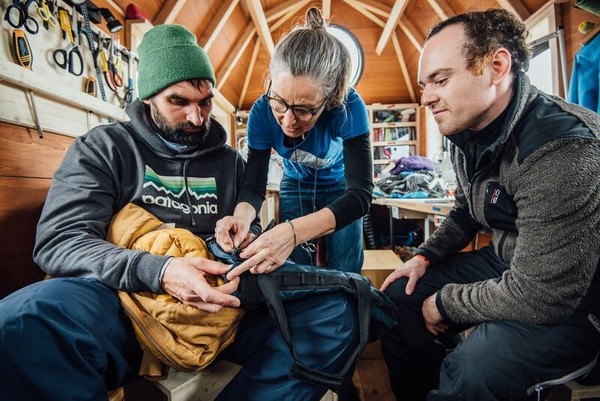OPPORTUNITIES IN NEW CIRCULAR BUSINESS MODELS
Product-as-a-service, repair services, life-extension strategies: we provide an overview of the new industrial strategies.
According to one of the fathers of the circular economy Walter Stahel, the efficiency of materials in a circular model can be enhanced in various ways: technically, commercially and with the use of innovation. We always think of restricted cycles of materials, reuse, recycling and upcycling, but what if the starting point was limiting consumption and allowing producers to have total control over the product?
When the product becomes a service
It’s called “product-as-a-service”, a business model in which the industry or a commercial player maintains the possession of the product, maximising its use and fully coordinating its management, maintenance, upgrade, reuse, regeneration and disposal. The model’s basic principle consists of the idea that people don’t have to own products to be thoroughly satisfied by their use.
There are five categories in the product-as-service business model able to significantly reduce greenhouse gas emissions in the product life cycle. The first can be defined as "price per use". The customer buys the product output as the amount of data used, hours of use, material consumption, kilometres travelled, etc. Instead of a light bulb, we can buy 10,000 hours of guaranteed lighting.
The second is a classic, widely-used in the corporate automotive sector: leasing. Customers obtain the right to use a product for a long period, and usually, access is limited and exclusive. Michelin’s offers, for example, include leasing tyres with a performance agreement.

Sharing goods reduces emissions
Another “product-as-a-service” solution is rental. Although similar to leasing, it is more flexible and shorter (from a few minutes to less than 30 days). Rental offers less customisation, but maximises its use (since access can be non-exclusive), and therefore also potential profit. A non-exclusive service fairly well spread throughout cities is car sharing. Moveel Group’s Car2Go, owned by Daimler AG, uses Smart ForTwo electric vehicles (petrol cars in some countries, but these will soon be replaced) for short urban rentals, averaging 10-20 minutes. The system, which interfaces with users via an app to be downloaded on their smartphones, allows you to pick up the car in any city car park and leave it once the rental is finished, as long as it is within the urban city limits. Other interesting examples of sharing services are related to household items. They are called Tool Libraries and work just like a regular library. Instead of borrowing books, you can rent tools for gardening, plumbing and carpentry, as well as strollers, boxed games, climbing harnesses and more complex technologies such as drones, robots and VR headsets, all at a low cost or, in some cases, for free.
Then, there is the performance agreement: the client buys a predefined service and the related high quality to obtain specific results. For example, the reduction of costs in energy or water bills, guaranteed 24/7 assistance, reduction of emissions, and maximisation of overall efficiency. This type of contract is of particular interest to those who manage complex buildings and environments, or energy-intensive technologies.
Fifth, and lastly, is the exchange of use. It is inspired by bartering, but works like time banks. Basically, the use of one product is exchanged for the use of another one. Although this model is almost unknown, with current digital technologies it would be possible to swap one hour of car sharing with two hours of social assistance for elderly people. There are also programmes such as time banks, where use or service is similarly exchanged. Even though they show promising potential, especially regarding new forms of living (such as co-housing or eco-neighbourhoods), they are still limited experiences.
READ ALSO: Circular procurement: companies leading the way in the private sector
The benefits of extending product life cycles
As we have seen, in addition to maximising use, one of the strategies for minimising energy and material consumption is to increase durability, enabling the product to live as long as possible. More and more companies are realising that product longevity and durability, if sold at a premium price, enable extra revenues to be generated, as if the product were resold several times, but using a tenth of the material and energy in the production processes.
“Restoring used products as if they were new through a modernisation process”. The regeneration business model is aimed at customers who wish to preserve their broken or unusable product, or are willing to pay a discounted price for items that are not brand new but are fully functional, backed by a guarantee that the commodities are identical or similar to the “brand new” one. Regeneration is a system particularly suitable for electronic devices and household appliances. It makes neither economic nor environmental sense to recycle an electrical appliance that can be reused. According to the data collected by Green Alliance in A circular economy for smart devices, for instance, keeping a smartphone in use for an additional year means reducing its CO2 footprint by 31%. Some big companies like Dyson, HP and Lenovo sell refurbished appliances on dedicated outlet websites, while IBM Global Asset Recovery Services has been refurbishing technology equipment for nearly 30 years.
Return and buyback is about collecting and selling used products in markets that deal with second-hand or remanufactured products. In some countries, hi-tech objects often become unpopular or obsolete but can have a second life in others, or can carve out spaces in niche markets, such as collectibles, vintage, etc.
Through dedicated interventions to repair the damage, products can also return to their original condition. Repairing services require careful customer care planning, which often imposes long-time inefficiencies, leading customers to say: "buy a new one rather than a good one". As with all the other life-extension approaches, benefits must be ensured in terms of cost, speed, reliability and guarantee durability. In Poland, as in France and Italy, many non-official repair centres have sprung up in recent years.
An article by Emanuele Bompan & Simone Fant

